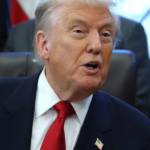While available data from private and alternative sources suggest that the jobs market hasn’t significantly weakened, economists are concerned that unemployment remains a key risk to the economy in 2026.
Investors’ confidence is yet to be marred by concerns about the labor market: After all, there is no concrete evidence to suggest a weakening in jobs numbers.
“With businesses investing prodigious sums of capital into productivity-enhancing technology, one should anticipate that firms of all sizes, and large businesses in particular, are poised to shed labor,” explained Brusuelas. “As the focus among businesses now turns to efficiencies and increasing productivity, we expect layoffs to increase, causing unemployment to rise.”
As a result, 2026 is likely to be a year of “low-hire, more-fire” he added.
Brusuelas’s take was echoed by Goldman Sachs’s chief U.S. economist, David Mericle. Writing in his weekly economics update overnight, Mericle noted that the finance giant’s layoff tracker is now at a higher level than in 2019 at the onset of the pandemic.
Goldman’s tracker is based off a series of other barometers collated by the bank: Layoffs, slack, and job growth. The layoff tracker shows a base case of a 0.2pp increase in the unemployment rate to 4.5% six months from now, and a 20-25% probability of a ½pp or larger increase.
“Our job growth tracker was stagnant over the summer, rose to 85k in September, then slowed to 50k in October. Incorporating the impact of the government deferred resignation program, we expect official nonfarm payrolls to decline 50k in October,” Mericle added, saying the possibility of jobless growth was a “key risk for the 2026 outlook.”
Brusuelas also warned that the Federal Reserve is not in a position to prevent the slowdown of the labor market with rate cuts. He argued the Fed does not have the tools to counterbalance issues like AI adoption or immigration policies, as these create structural, not cyclical, unemployment.
“The Fed is not well positioned to address, much less fix, the structural dynamics that are causing hiring to slow,” he added. “That is a function of fiscal policy, which right now remains a mess with the administration focused on trade and immigration.”
Here’s a snapshot of the markets ahead of the opening bell in New York this morning:









